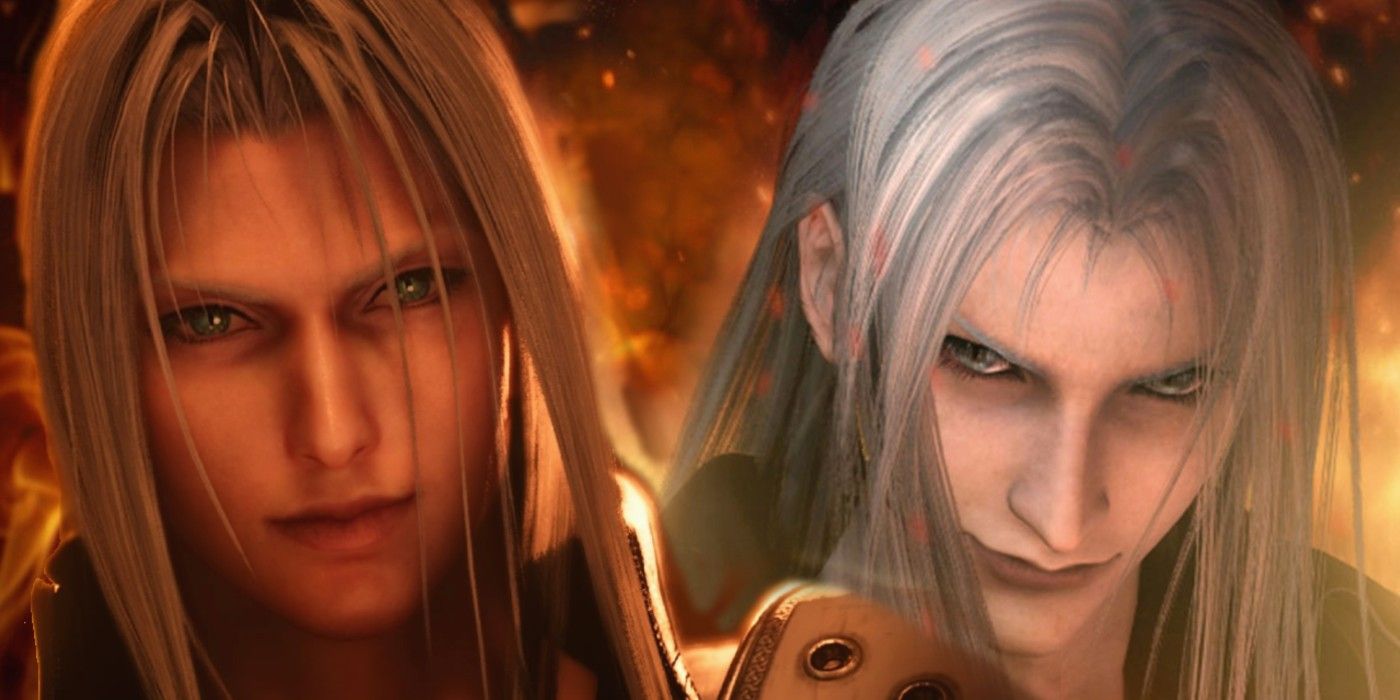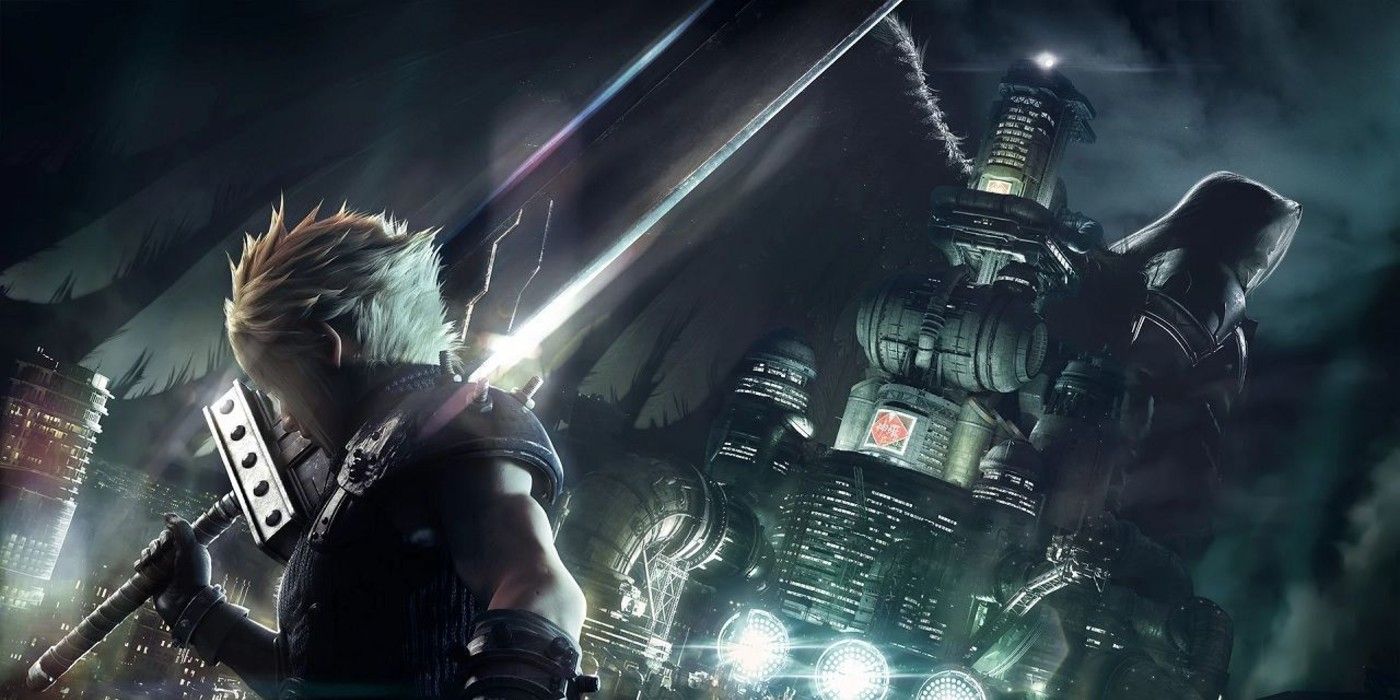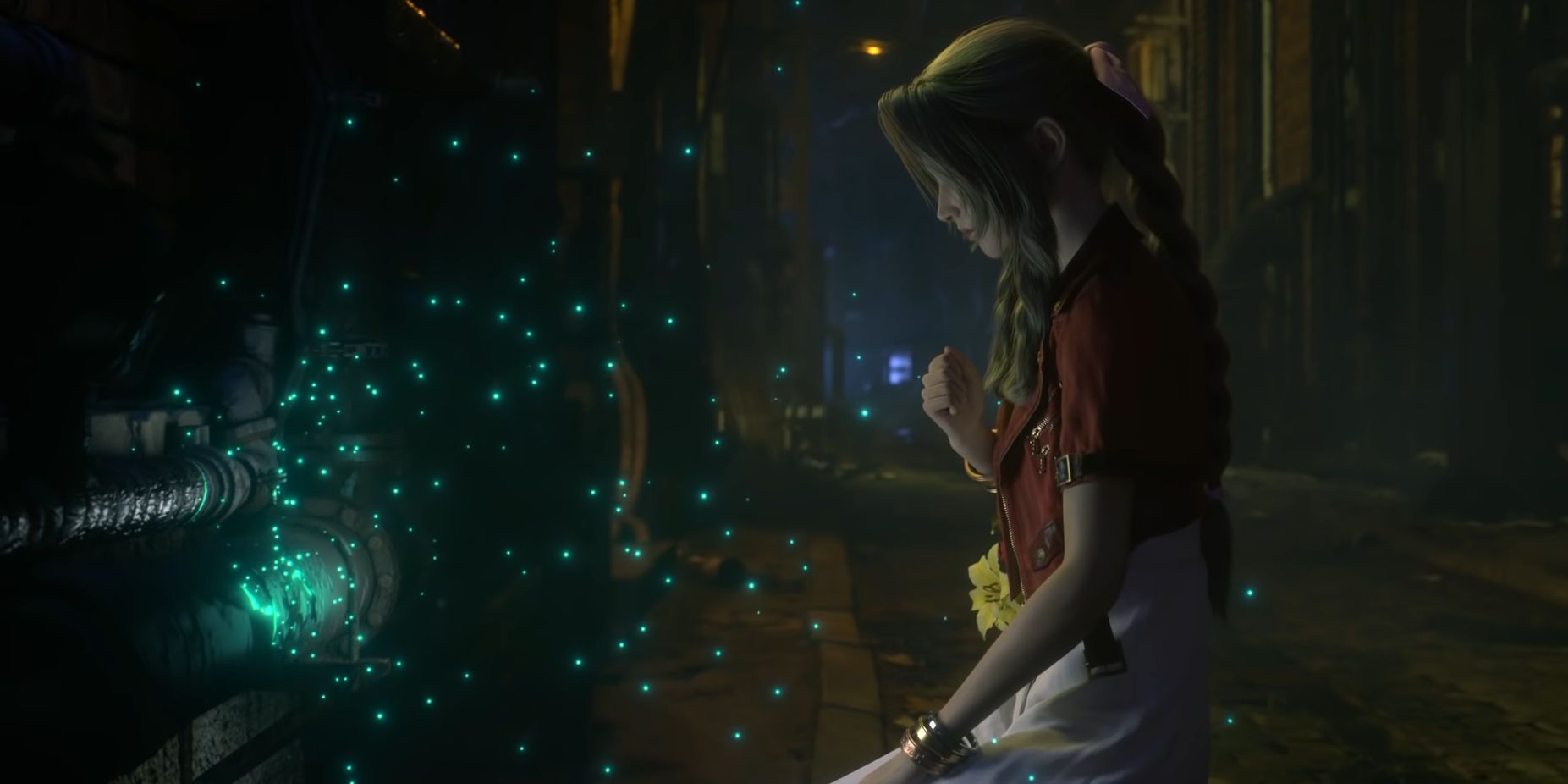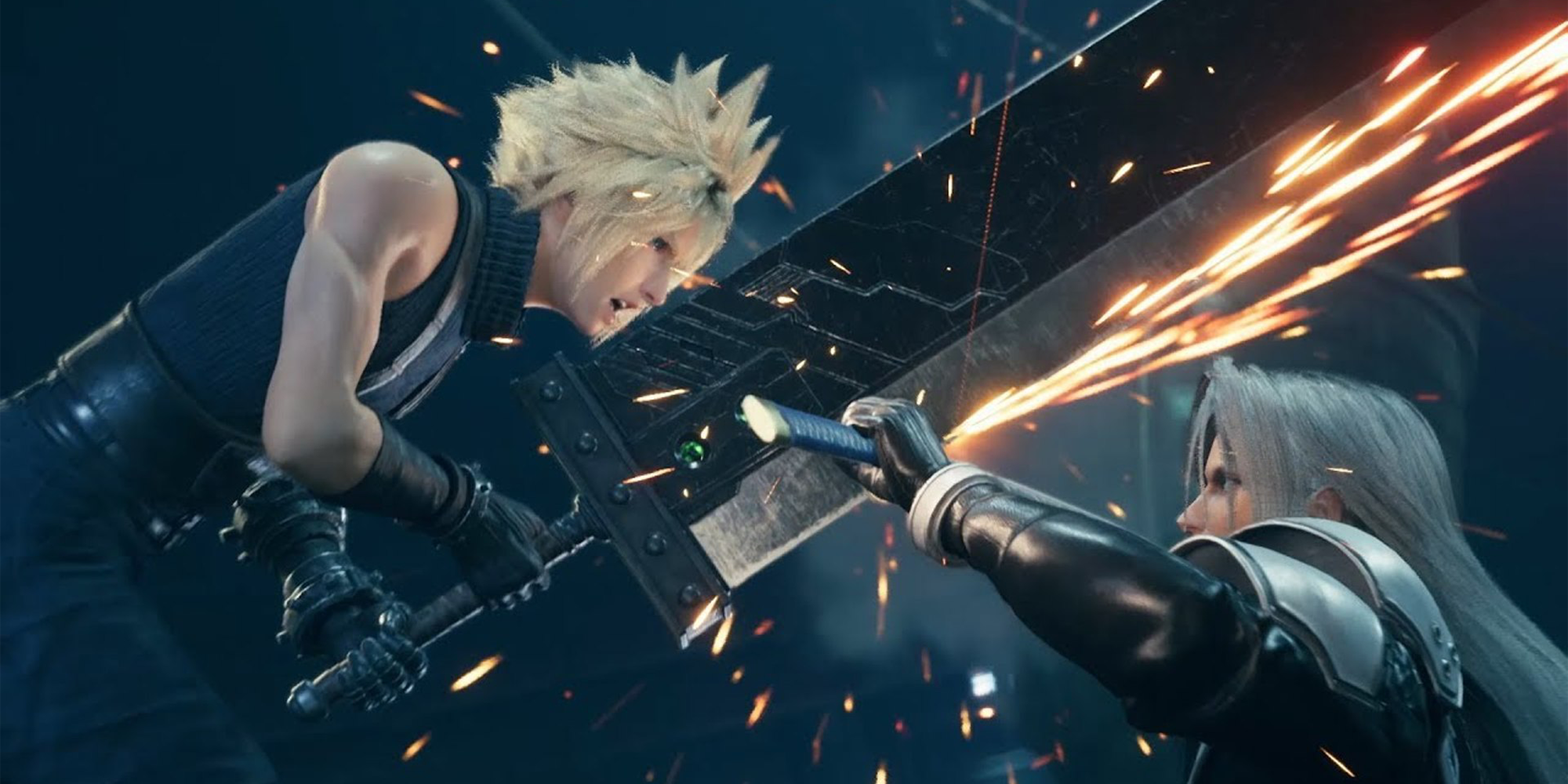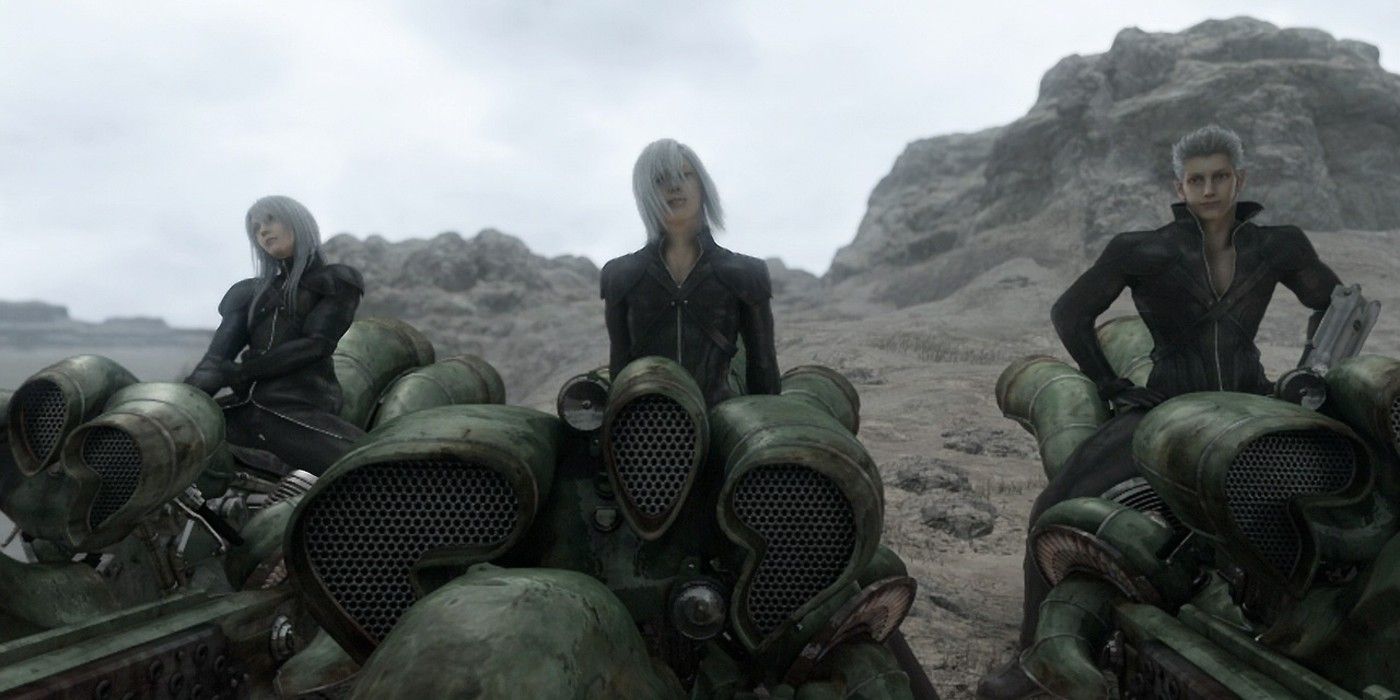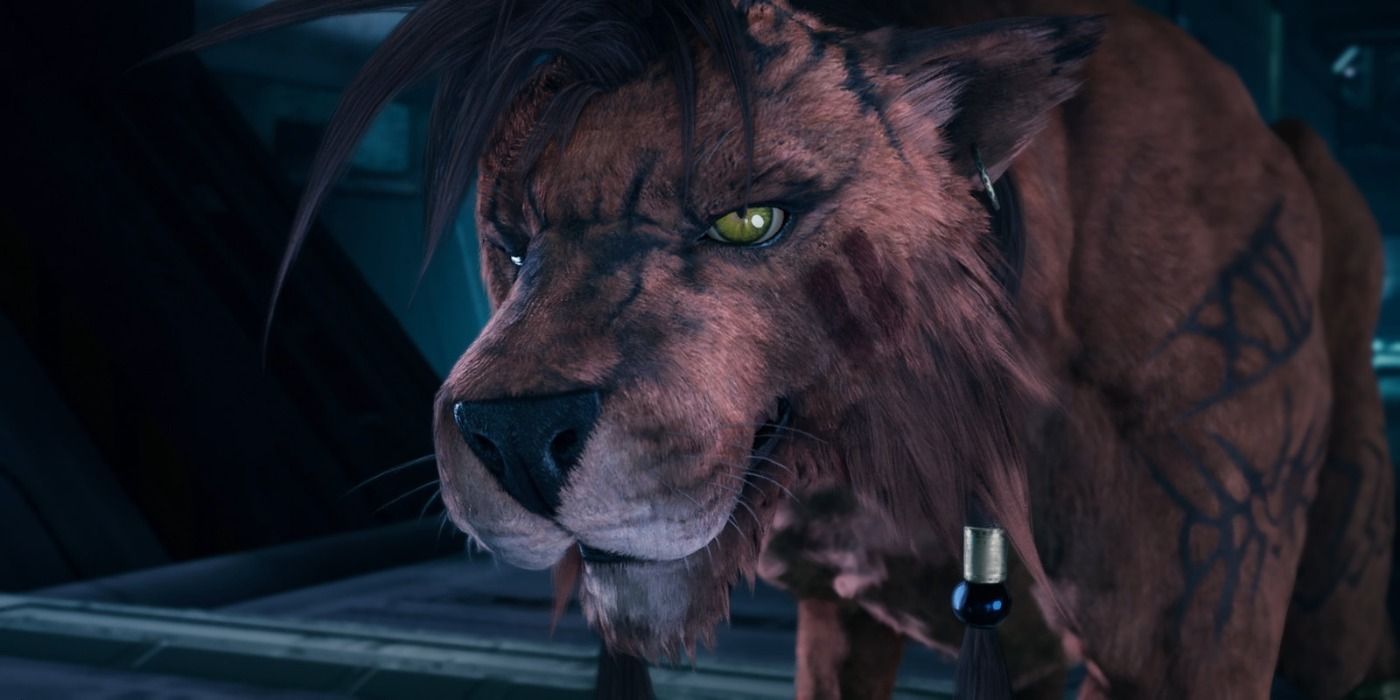Final Fantasy 7 Remake has proven to be more than just an enhanced adaptation of the original 1997 version, and those who haven't experienced other compilations of the FF7 series — like the 2005 film sequel Final Fantasy VII: Advent Children — may have missed some major clues as to what direction the 2020 game is heading. Fans have already pointed out a few Advent Children Easter eggs in the game, but this "hidden" content appears to be much more than just an homage to the events that take place two years after the original Final Fantasy 7 ends.
[Warning: Major SPOILERS For Final Fantasy 7 Remake below]
The controversial ending of FF7 Remake certainly leaves more questions than answers, but what is known from Advent Children could help fill in some gaps. Sephiroth and Aerith obviously know more then they let on, and the presence of the Whispers trying to keep destiny in alignment with the original game has sparked all kinds of theories among fans. One of the more prominent conjectures is that Sephiroth has somehow gone back in time to "remake" history in his favor, hence the title's clever name. The connections between Advent Children and the remake heavily support this.
The developers mentioned they would be drawing from Advent Children as early as 2015 when game director Tetsuya Nomura stated to Official PlayStation Magazine (thanks, GamesRadar) that the team "will be looking to the movie for visual references and inspiration." It's worth noting that Nomura also directed Advent Children. While the visual references are a given, it appears the FF7 Remake developers have taken more inspiration from the film than they originally had fans believe.
Final Fantasy 7 Remake & Advent Children: The Black Wing
Arguably one of the first Advent Children references was released before FF7 Remake debuted. The original artwork portrays Sephiroth with a black wing, which was something he didn't have in the 1997 version until the very end of the game, when he takes on his final form of Safer Sephiroth, and it's also a characteristic he carried over into Advent Children, as it did take place after the original game's events. Yet FF7 Remake introduces this black wing before fans could even play the game. Also, in Chapter 1, when Avalanche is planting a bomb in Mako Reactor 1, Cloud gets a headache similar to the original, except in FF7 Remake he sees a black feather. This suggests that the events in the remake take place after the final battle in the original game.
Final Fantasy 7 Remake & Advent Children: Musical Clues
Sephiroth's thematic "One-Winged Angel" track plays for the first time in the original Final Fantasy 7 when he becomes Safer Sephiroth. It's heard again in his battle with Cloud at the end of Advent Children, and when the two fight in FF7 Remake's finale. It's become synonymous with the silver-haired antagonist and is commonly featured anytime he makes an appearance like in Crisis Core and in the Kingdom Hearts series.
However, it can first be heard in FF7 Remake's opening cinematic when Aerith is looking at the Mako energy releasing from a pipe. Though the music begins similar to the original, the remake transitions into an eerie rendition of "One-Winged Angel" despite Sephiroth's absence, and Aerith becomes startled as she turns to look down the alley.
This juxtaposition of a final battle song at the beginning of the game is curious. It could be foreshadowing the evil to come, or highlight Sephiroth's and Aerith's connection, but it could also symbolize FF7 Remake picking up where Advent Children left off. At the end of the film, Sephiroth warns Cloud, "I will never be a memory," and his actions in the remake suggest he's holding up his promise. When Sephiroth is actually introduced in the 2020 game, "One-Winged Angel" does not accompany him. Rather, a revised version of "The Promised Land" can be heard — a track previously exclusive to Advent Children. It's renamed "Cycle of Souls" on the remake's soundtrack, and that title alone evokes connotations of the Lifestream — the ethereal substance that contained Sephiroth's spirit and pieces of Jenova. Their presence in the Lifestream is what caused the planet to get infected with the disease Geostigma in Advent Children.
Final Fantasy 7 Remake & Advent Children: Final Battle Significance
The similarities between the ending battles in FF7 Remake and Advent Children are hard to ignore. Both titles have Cloud and Sephiroth engaging in dynamic combat, using similar moves, and surrounded by a stormy environment with flying building pieces and debris. The film also portrays Sephiroth with dark wisps surrounding him, which are reminiscent of the Whispers in the remake. In the original FF7, the party never meets Sephiroth in Midgar, let alone battle him until the very end of the game at the planet's core. While many feel FF7 Remake breaks canon by having him appear so early, subtle clues in the battle with the Whispers right before Sephiroth's fight — any many more throughout the game — hint at how the 2020 adaptation may actually be a sequel to Advent Children.
Final Fantasy 7 Remake & Advent Children: Whispers & Sephiroth's Remnants
According to the Final Fantasy VII Remake Ultimania, the three Whispers derive their fighting styles from Sephiroth's Remnants in Advent Children. The Remnants are the trio of antagonists formed by Sephiroth as a physical manifestation of his will from within the Lifestream. Whisper Rubrum and Kadaj use a one-handed blade, Whisper Viridi and Loz fight with their fists, and Whisper Croceo and Yazoo use a gun. Additionally, Whisper Croceo's Amber Whirl ability is named "Velvet Nightmare" in the Japanese version, according to aitaikimochi's translation of the Ultimania. Velvet Nightmare is the name of Yazoo's gun in Advent Children. The description for each of these Whispers state, "An entity from a future timeline that has manifested in the present day," which really fuels the "Sephiroth is from the future" theory.
Another interesting link is that in the film, Kadaj summons Bahamut, and in the remake, the three Whispers form into Whisper Bahamut. During this battle, the party sees flashes of events that happened in the original FF7 game: teases of Aerith's death, Meteor crashing down on the planet, and Red XIII running with his cubs in an apocalyptic future. Red XIII explains these events will be their future if they "fail here today." While the remake could have made their own rendition of Red XIII and the cubs running, they didn't; nor did they use the original game's ending. Instead, they took that scene straight from Advent Children.
FF7 Remake & Advent Children: Other Important Connections
Sephiroth's early appearance and constant taunting of Cloud in the remake did not happen so early in the original. Instead, he was more focused on reuniting with Jenova, and didn't seem to think much of the protagonist. His obsession over Cloud in FF7 Remake mirrors that of Advent Children, after Sephiroth became aware of Cloud's role in his defeat. He seems to be manipulating Cloud into helping him achieve a future where he can be victorious. He tells Cloud at the end of the remake, "That which lies ahead does not yet exist... Let us defy destiny together," denoting that their actions are creating a new future, rather than the one Sephiroth experienced.
It would seem he found a way to do this. During their battle in Advent Children, Sephiroth says, "What I want, Cloud, is to sail the darkness of the cosmos with this planet as my vessel — just as my mother did long ago." It sounds like the Lifestream is that vessel — Sephiroth's means to somehow going back in time and remaking history. Red XIII even describes the Lifestream in the remake as "the flow of the great river that is the planet from inception to oblivion," which would suggest it is linked to time itself.
While some fans may be disappointed Final Fantasy 7 Remake isn't the same exact story as the 1997 original, it seems the developers have found a smart way to seemingly recreate a classic game while keeping it fresh for long-time admirers. This does add some confusion as to how the future of this series will play out now that the heroes have altered destiny. Tetsuya Nomura has played around with time travel in other works like Final Fantasy VIII, X, and other titles, so it isn't too surprising to see it done here. Hopefully this "dilly dally shilly shally" of events will still bring about some of the nostalgic scenes from the original Final Fantasy 7 game.
Source: Official PlayStation Magazine (via GamesRadar), aitaikimochi/Twitter

